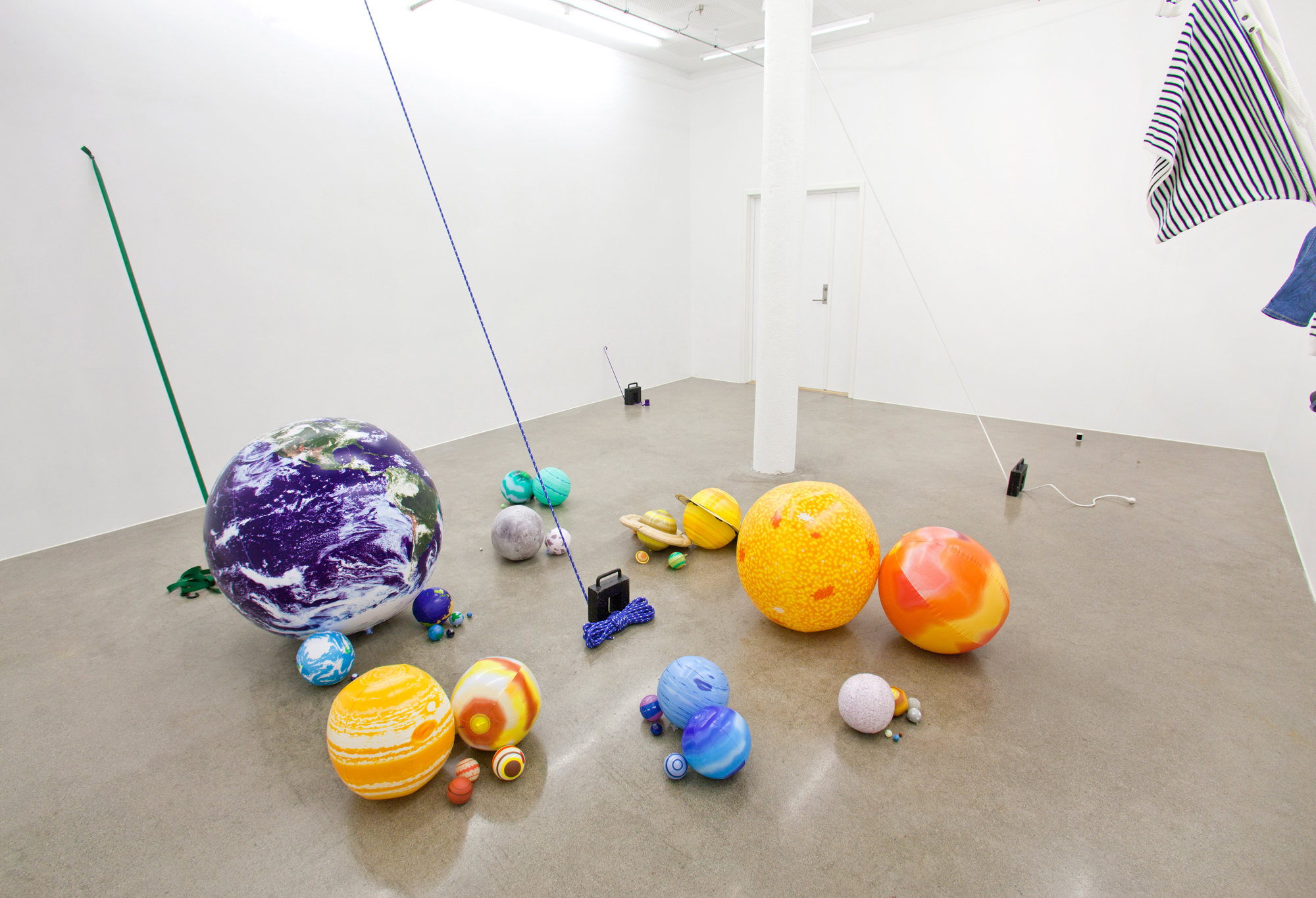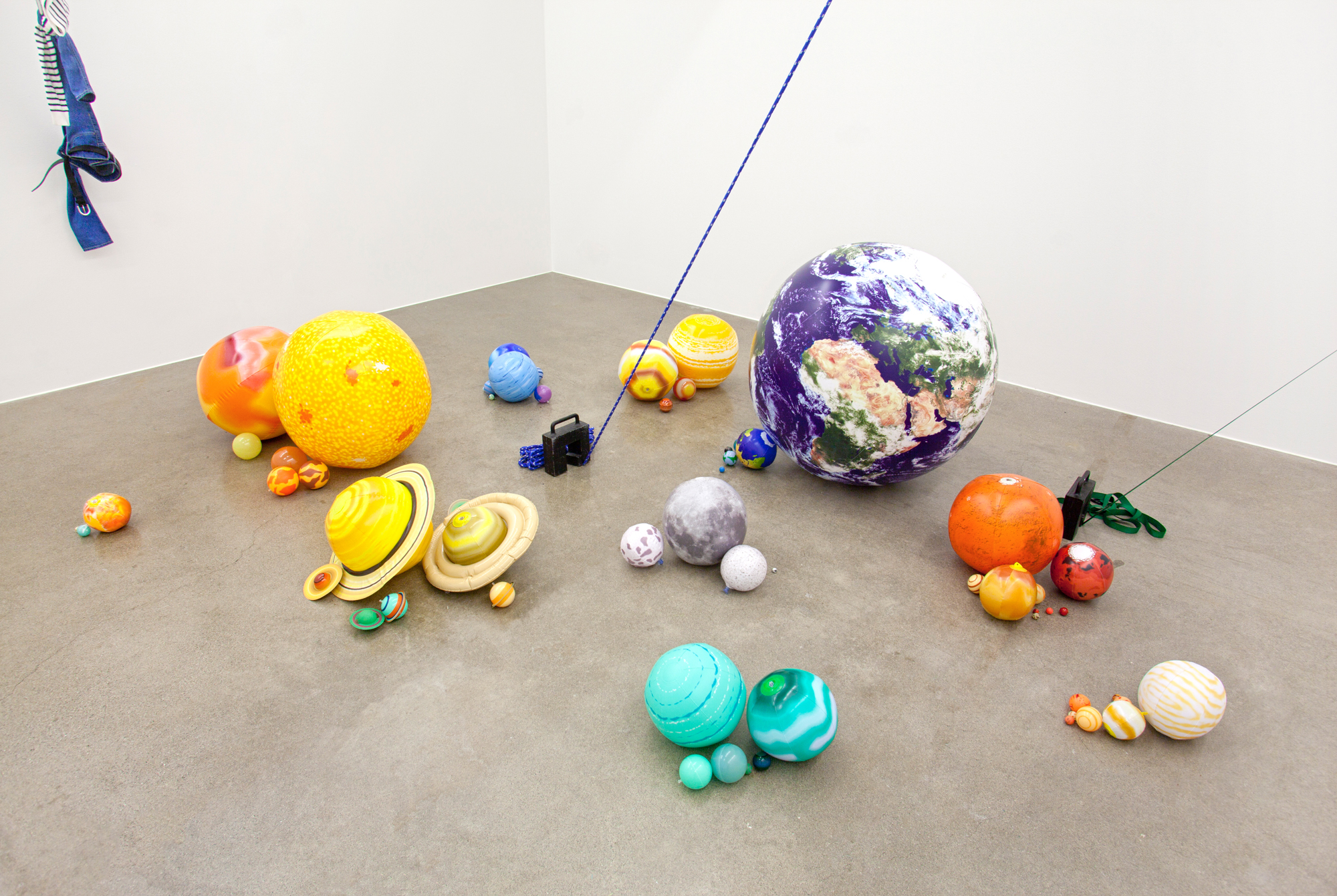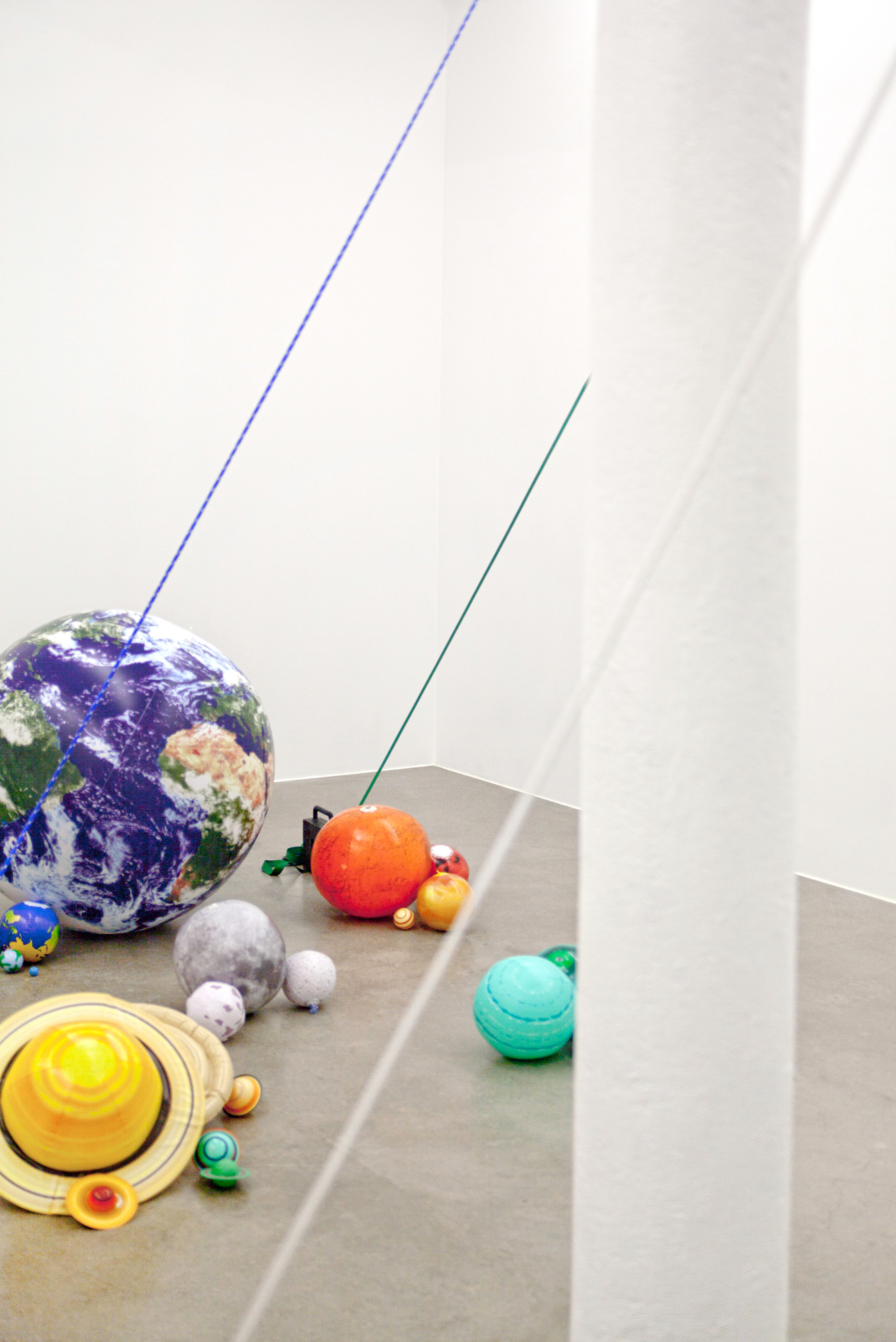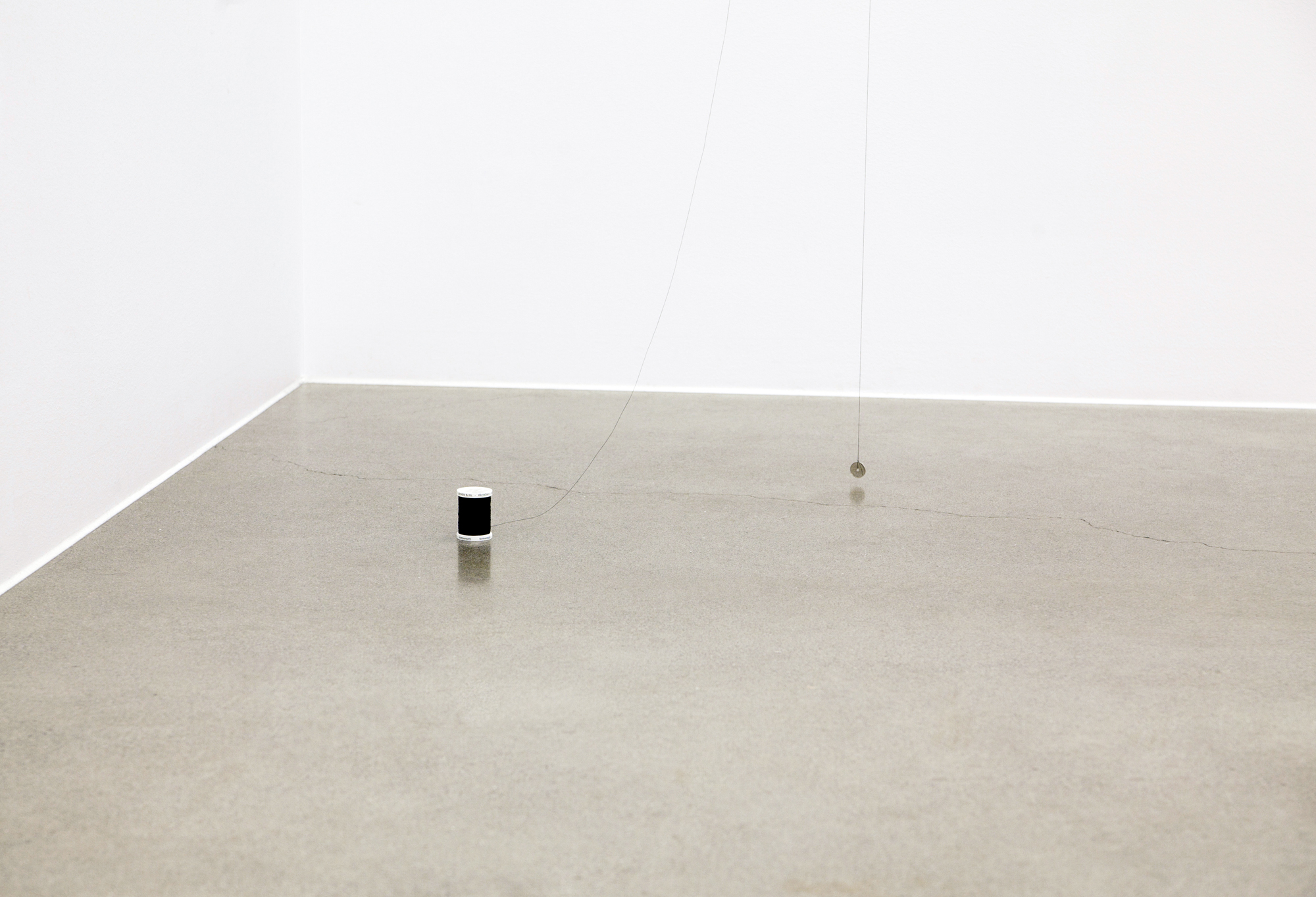Averted Vision
2016
Found objects and solar system model sets
There are three categories of elements in the gallery space: 1) models of the star and planets in our solar system, 2) man-made objects that are parallel with the axis of Earth’s rotation, 3) and a coin on a string that is perpendicular to its coordinate on the globe.
—
Ironically, when attempting to observe the most faint and distant deep-sky objects through a telescope, they can appear to blink in and out of existence entirely. Try to look directly at them, and they vanish. The trick to perceiving these dim objects is to look indirectly—just off to the left or right—using a technique called 'averted vision.' The idea is to concentrate on the target without looking directly at it.
This phenomenon exists because of two types of light-detecting cells in your retinas: cone cells and rod cells. The center of the retina is packed with cones, which are best at detecting color and fine detail. The rod cells are concentrated in a ring around the outside of the central group of cones, and are specially suited for sensing faint light in peripheral vision.
It’s because of this particular arrangement that by shifting your attention a few degrees to one side or the other allows the light to pass through the lens of your eye at a different angle, and more directly to the rod cells. In practice, the experience is strangely more like sensing than seeing. Averted vision, as a technique, can be applied to other disciplines as well; it can be seen as a logic system in itself. If the object is dim, inaccessible, or imperceivably massive, search in the periphery.







Exhibition: Averted Vision, White Box Galleri, KHiO, Oslo, Norway